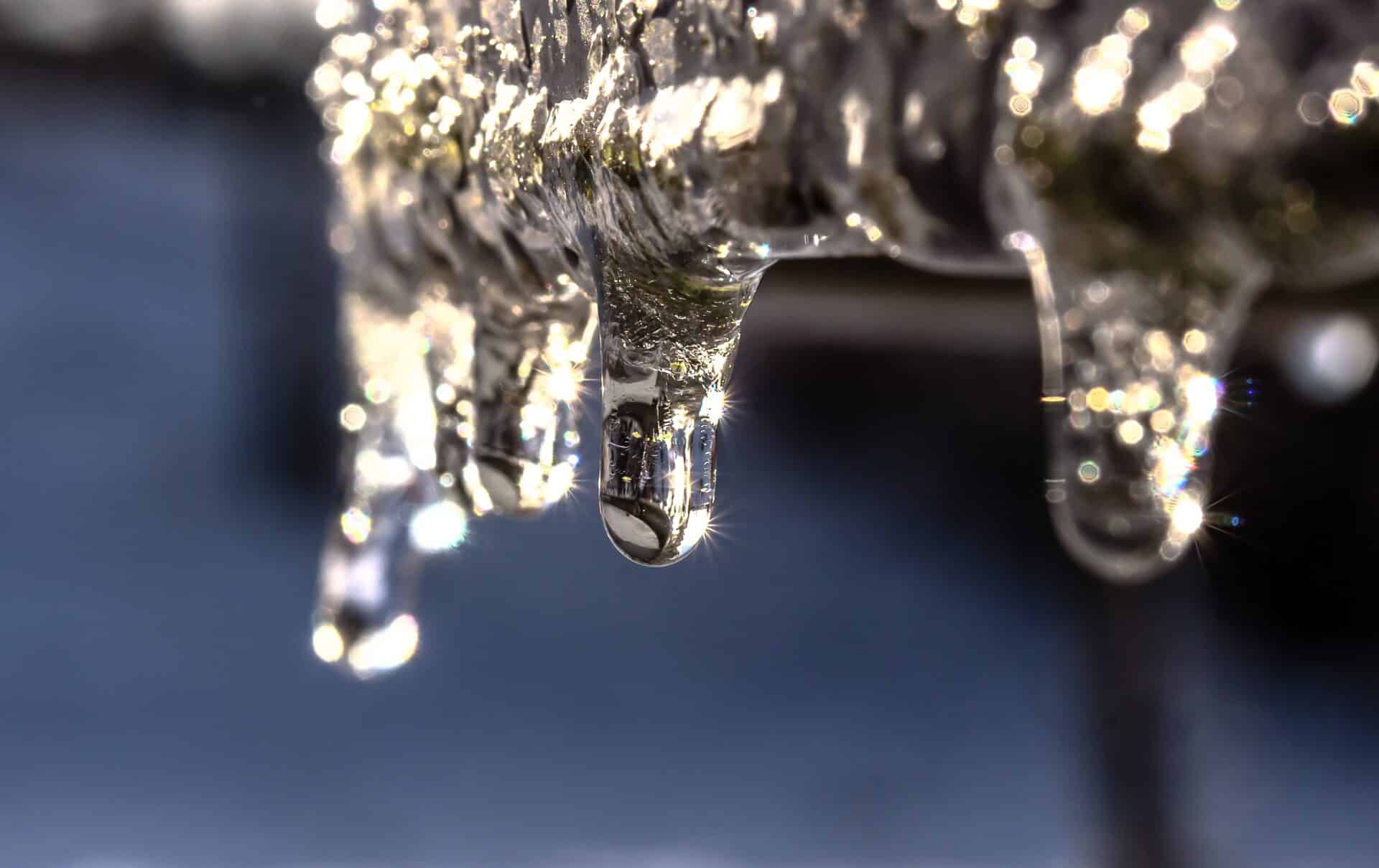Tap water is one of the main sources of drinking water for many of us. It’s essential to know how cold it is in order to make sure we are drinking safe and healthy water. In this article, we will take a look at how cold tap water typically is and the factors that affect its temperature.The temperature of tap water can vary depending on the area and time of year. Generally, tap water is around 10°C (50°F) in most parts of the world. In colder climates, such as during winter, the temperature of tap water may be a few degrees lower than this.
Environmental Factors
Tap water temperature is affected by a variety of environmental factors, such as air and water temperature, humidity, rainfall and other meteorological variables. For example, when the ambient air temperature is very high, the tap water will also be heated to a higher temperature. Similarly, when there is high humidity in the air or when it rains heavily, the tap water will be cooler than usual. In addition to meteorological conditions, the surrounding environment can also affect tap water temperature. For instance, if a body of water is nearby and has higher temperatures than the atmosphere surrounding it, then this could cause an increase in the tap water temperature.
Seasonal Variations
Seasonal variations can also have a major impact on tap water temperature. During summertime, tap water may be warmer due to increased solar radiation as well as higher temperatures in general. Conversely, during wintertime, tap water will typically be colder due to decreased solar radiation and lower temperatures in general. Additionally, seasonal precipitation patterns can also affect tap water temperatures due to changes in air and water temperatures or increased levels of precipitation.
Geographical Location
The geographical location of a particular area can have an impact on its tap water temperature as well. Generally speaking, areas closer to sea level tend to have warmer waters than those at higher altitudes due to differences in atmospheric pressure and average air temperatures. Additionally, coastal areas tend to experience more mild temperatures throughout the year compared to inland regions which often experience more extreme climates with hotter summers and colder winters.
Man-Made Structures
Man-made structures such as dams or reservoirs can also affect the temperature of local waterways. By controlling the flow of rivers or streams through these structures and regulating their release into larger bodies of waters with different temperatures (such as oceans), it is possible for certain areas to experience slightly warmer or cooler waters than would normally be expected based on their geographical location alone.
Average Temperature of Tap Water
Tap water is one of the most important resources for many households and businesses. Knowing the average temperature of tap water can help people make informed decisions about how to use it. For example, knowing the average temperature can help people decide if they want to cool their tap water for drinking or for other uses. It is also important to know the average temperature when selecting a hot water heater or other appliances that use tap water.
The average temperature of tap water varies depending on where you live, the type of tap you have, and even the season. In most areas, tap water is coldest during the winter months when temperatures outside are cooler. In some areas, however, the average temperature may be slightly warmer during this time due to lower demand. During summer months, it is common for tap water temperatures to rise as demand increases and temperatures outside increase as well.
In general, though, the average temperature of tap water can range from 40-80°F (4-27°C). This range can vary greatly depending on your location and other factors such as altitude or climate. It is important to research your local area in order to determine what kind of temperatures you can expect from your tap water.
Knowing the average temperature of your local tap water can help ensure that you are using it appropriately for any given task or situation. For example, if you want to use hot tap water for a specific purpose such as cleaning dishes or laundry, then knowing its average temperature can help you select an appropriate appliance setting so that it does not become too hot or too cold for use. Additionally, understanding how warm your tap water gets in different seasons can help you plan ahead and make sure that any appliances you purchase are able adjust accordingly in order to accommodate changes in temperature.
Overall, understanding the average temperature of your local tap water is important in order to ensure that you are using it appropriately and making informed decisions about appliances or other tasks related to its use.
Measuring Tap Water Temperature
Tap water temperature is an important factor in a variety of tasks, from washing dishes to bathing. Knowing the exact temperature of tap water can help ensure that you are using the right amount of hot or cold water for the job at hand. Measuring the temperature of tap water is easy, and there are several methods that you can use.
One way to measure tap water temperature is with a thermometer. You can purchase a digital thermometer that is specially designed for measuring the temperature of liquids, such as tap water. This will give you an accurate reading in degrees Fahrenheit or Celsius. Place the thermometer in the running water and wait until it stabilizes to get an accurate reading.
Another way to measure the temperature of tap water is by using a kitchen timer. Fill a glass with tap water and place a timer on top of it. Start the timer and wait until it beeps or until it reaches the desired amount of time. The time elapsed will tell you how hot or cold your tap water is.
Finally, you can also use your hand to measure the temperature of your tap water. Place your hand in the running stream and count how many seconds it takes before you feel uncomfortable with either heat or coldness. This method is not as precise as using a thermometer, but it will give you an idea of how warm or cool your tap water is without having to purchase any special equipment.
Measuring tap water temperature does not have to be difficult or time-consuming, and with these methods, it can be done quickly and easily without having to invest in any expensive equipment. Knowing exactly what temperature your tap water is can help ensure that you are using just the right amount for all sorts of tasks around the home, from cooking to cleaning.
The Benefits of Cold Tap Water
Cold tap water is a great way to stay hydrated and healthy. It is easy to access, readily available, and usually tastes good. Drinking cold water can also provide a number of health benefits including improved digestion, enhanced metabolism, and increased energy levels. Here are some of the top benefits of drinking cold tap water:
Improved Digestion
Cold tap water can help improve your digestion by promoting the secretion of digestive enzymes in the stomach and intestines. Digestive enzymes are essential for breaking down food molecules into smaller pieces that can be absorbed by the body. In addition, cold water helps to reduce inflammation in the digestive tract, which can help reduce symptoms such as diarrhea.
Enhanced Metabolism
Drinking cold tap water can also help boost your metabolism. When you drink cold water, your body has to work harder to raise its temperature back up to normal levels. This extra effort requires energy, which means that your body will burn more calories as it works to warm up the water. This can help you lose weight over time.
Increased Energy Levels
Drinking cold tap water can also help increase your energy levels throughout the day. When you drink cold water, it helps cool down your body’s core temperature and makes you feel more energized. This increased energy level can help boost your performance at work or during physical activities.
These are just some of the many benefits of drinking cold tap water on a regular basis. Cold tap water is an excellent source of hydration and offers numerous health benefits that can improve your overall well-being. So make sure you stay hydrated with plenty of cold tap water!

The Effects Of Cold Tap Water On Health
Cold tap water has a variety of positive effects on health. It can help reduce body temperature, improve digestion and metabolism, and boost energy levels. It can also help flush out toxins from the body and can be used to treat skin conditions such as acne. Cold tap water also helps the body stay hydrated, which is important for overall health.
Drinking cold tap water can help relieve stress and anxiety. The cold temperature helps to relax muscles and reduce tension in the body, which in turn reduces stress levels. Cold tap water can also help improve concentration and focus by providing an immediate rush of energy.
Cold tap water can also help with weight loss by speeding up metabolism and burning more calories. The cold temperature increases metabolic rate, which boosts calorie-burning potential. Additionally, drinking cold water before meals has been shown to reduce appetite and reduce total calorie intake during meals.
Cold tap water is also beneficial for digestive health because it helps flush out toxins from the body, improves digestion, and prevents constipation. Additionally, it stimulates saliva production which helps break down food more easily in the stomach.
Overall, cold tap water can have positive effects on health if consumed regularly in moderation. However, it is important to note that overconsumption of cold water could lead to health issues such as stomach cramps or headaches due to excessive cooling of the body’s core temperature. Therefore, it is important to drink cold tap water in moderation and always consult a doctor before making any major changes to your diet or lifestyle.
Comparison Between Hot And Cold Tap Water
Tap water is a source of hydration that is available in both hot and cold forms. The two forms of tap water vary in terms of how it is used and its effects on our bodies. Hot tap water is primarily used for drinking and cooking, while cold tap water is generally used for drinking, bathing, and cleaning. Both hot and cold tap water have their own unique benefits.
Hot tap water helps to reduce the risk of stomach-related illnesses because it can kill bacteria that may be present in the water. It also helps to improve digestion by breaking down fats and proteins found in food during digestion. Hot tap water also helps to reduce the risk of colds and flu because it can help to open up airways, allowing for easier breathing.
Cold tap water has its own set of benefits as well. It helps to reduce inflammation, as cold temperatures can constrict blood vessels, reducing swelling and inflammation throughout the body. Cold tap water also helps to boost energy levels, as it can stimulate oxygen levels in the body. Cold tap water can also help with skin issues such as acne, psoriasis, or eczema by cooling down the skin and reducing redness or irritation.
In conclusion, both hot and cold tap water have their own unique benefits that make them beneficial for different uses. While hot tap water can help with stomach-related illnesses and digestion issues, cold tap water can help with skin issues such as acne or eczema as well as providing a boost of energy due to its stimulating effect on oxygen levels in the body.
Using Cold Tap Water
Using cold tap water is an economical and environmentally friendly way of obtaining water for many everyday uses. By following a few simple best practices, you can ensure that the cold tap water you use is safe and effective.
Before using cold tap water, it is important to check with your local municipality to make sure the water meets safety standards. If the water does not meet standards, it should not be used for drinking, cooking, or bathing.
When using cold tap water for any purpose, make sure to use fresh taps that are not connected to any other pipes or fixtures. This will help prevent contamination from other sources.
It is also important to properly store cold tap water when not in use. The container should be cleaned regularly and covered when stored in a refrigerator or other cool place. This will help ensure that the water remains free of bacteria and other contaminants.
Finally, it is best practice to only use cold tap water that has been filtered or boiled before use. Filtering or boiling can help remove harmful contaminants such as lead, chlorine, and other contaminants that may be present in the tap water supply. Boiling can also help reduce any bacteria present in the water.

Conclusion
The temperature of tap water can vary depending on where you live and the time of year, but generally it is between 8-15 degrees Celsius. It is important to note that all tap water should be treated before drinking, as it may contain bacteria or other contaminants. Despite this, cold tap water is generally safe to drink and can provide a refreshing and healthy beverage.
In conclusion, cold tap water is perfectly safe to drink as long as it is treated before consumption. It is usually cold enough to provide a refreshing drink on a hot day, but the exact temperature varies depending on where you live. Cold tap water can also be used for other purposes such as cleaning and cooking.
No matter what your purpose for using tap water, it is important to remember that it should always be treated before consumption in order to ensure safety and avoid any potential health risks.

